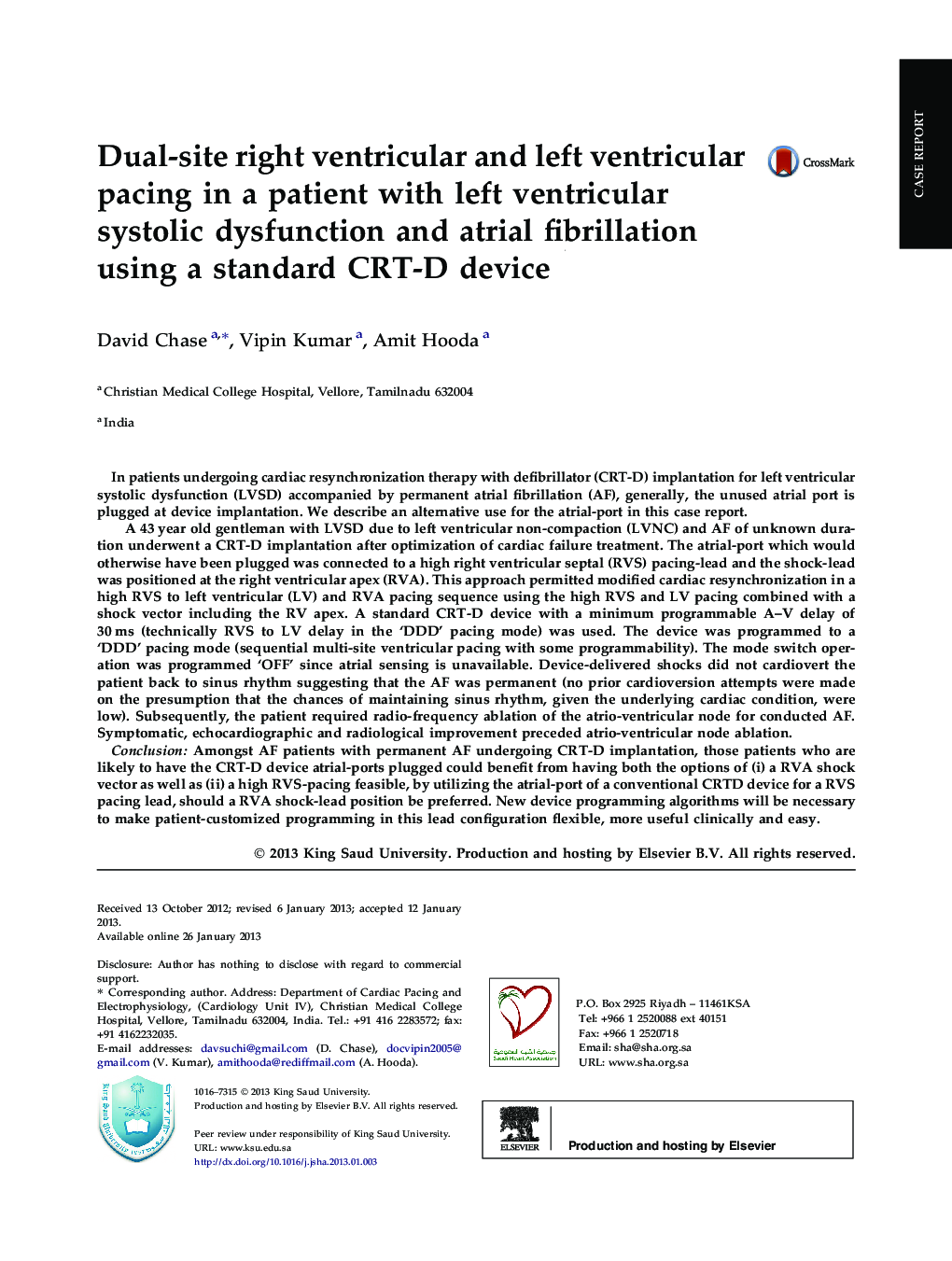| Article ID | Journal | Published Year | Pages | File Type |
|---|---|---|---|---|
| 2978157 | Journal of the Saudi Heart Association | 2013 | 6 Pages |
In patients undergoing cardiac resynchronization therapy with defibrillator (CRT-D) implantation for left ventricular systolic dysfunction (LVSD) accompanied by permanent atrial fibrillation (AF), generally, the unused atrial port is plugged at device implantation. We describe an alternative use for the atrial-port in this case report.A 43 year old gentleman with LVSD due to left ventricular non-compaction (LVNC) and AF of unknown duration underwent a CRT-D implantation after optimization of cardiac failure treatment. The atrial-port which would otherwise have been plugged was connected to a high right ventricular septal (RVS) pacing-lead and the shock-lead was positioned at the right ventricular apex (RVA). This approach permitted modified cardiac resynchronization in a high RVS to left ventricular (LV) and RVA pacing sequence using the high RVS and LV pacing combined with a shock vector including the RV apex. A standard CRT-D device with a minimum programmable A–V delay of 30 ms (technically RVS to LV delay in the ‘DDD’ pacing mode) was used. The device was programmed to a ‘DDD’ pacing mode (sequential multi-site ventricular pacing with some programmability). The mode switch operation was programmed ‘OFF’ since atrial sensing is unavailable. Device-delivered shocks did not cardiovert the patient back to sinus rhythm suggesting that the AF was permanent (no prior cardioversion attempts were made on the presumption that the chances of maintaining sinus rhythm, given the underlying cardiac condition, were low). Subsequently, the patient required radio-frequency ablation of the atrio-ventricular node for conducted AF. Symptomatic, echocardiographic and radiological improvement preceded atrio-ventricular node ablation.ConclusionAmongst AF patients with permanent AF undergoing CRT-D implantation, those patients who are likely to have the CRT-D device atrial-ports plugged could benefit from having both the options of (i) a RVA shock vector as well as (ii) a high RVS-pacing feasible, by utilizing the atrial-port of a conventional CRTD device for a RVS pacing lead, should a RVA shock-lead position be preferred. New device programming algorithms will be necessary to make patient-customized programming in this lead configuration flexible, more useful clinically and easy.
